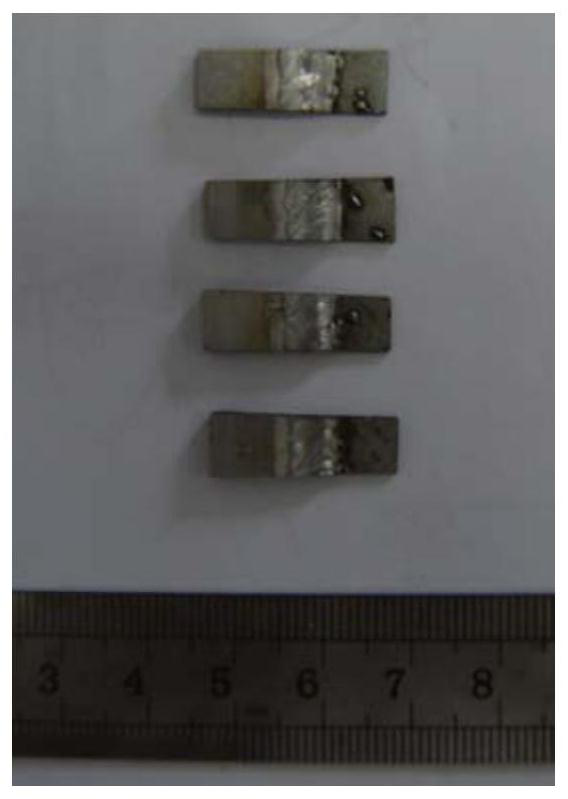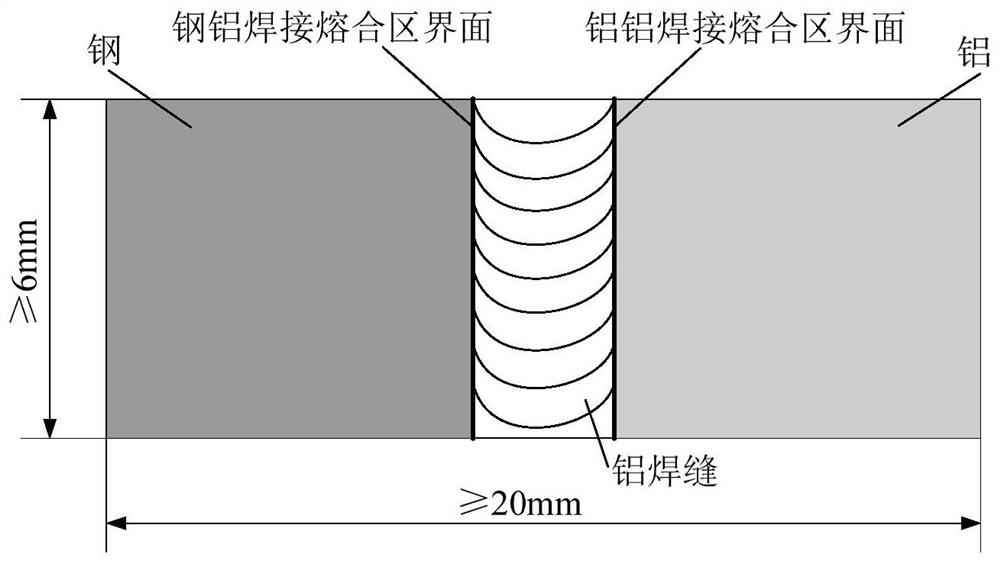Transmission electron microscope sample preparation method suitable for dissimilar material welding joint interface analysis
A technology of dissimilar materials and welded joints, which is applied in the direction of material analysis using radiation, material analysis using wave/particle radiation, and material analysis. The effect of low cost and short time consumption
- Summary
- Abstract
- Description
- Claims
- Application Information
AI Technical Summary
Problems solved by technology
Method used
Image
Examples
Embodiment 1
[0042] Using ion thinning technology to carry out transmission electron microscope sample preparation on welded joints of aluminum and steel dissimilar materials, the specific steps are as follows:
[0043] (a), if figure 1 , the form of the welded joint of dissimilar materials is a lap joint, and the sample of the welded joint of dissimilar materials is prepared by wire cutting into a plane size greater than or equal to 20mm╳6mm, and the initial sample is a uniform thin sheet with a thickness of about 1.0mm, so that the base metal of aluminum and steel accounts for each Half the area, and symmetrical to the weld, such as figure 2 , 3 .
[0044] (b) Put the initial wire-cut sample into an acetone solution, and clean it with ultrasonic vibration to remove surface oil.
[0045] (c) Stick the sample on a metal or glass substrate of appropriate size, and perform manual flat grinding on sandpaper. When grinding, use force on the steel side and light force on the aluminum side,...
Embodiment 2
[0057] The transmission electron microscope sample preparation method for the interface analysis of welded joints of dissimilar materials, the specific steps refer to Example 1, the differences are as follows:
[0058] In step (c), the sample is ground into a uniform sheet with a thickness of about 50 μm.
[0059] In step (f), the speed of the grinding wheel is in 3rd gear, and the sample rotation speed is in 3rd gear.
[0060] In step (g), the grinding pressure is set to 20g during the pit.
[0061] In step (i), the sample is first ground to a range of 20 μm using a fine grinding paste with 3-6 μm particles. At this thickness, replace the abrasive paste of 0.5 μm for continuous polishing, so that the remaining thickness of the sample is 10 μm.
[0062] In step (j), the ion gun angle is set to 8°, the acceleration energy is set to 5keV, the sample rotation speed is 3rpm, and the current readings of the left and right ion guns need to be greater than 6μA.
[0063] In step (l...
PUM
| Property | Measurement | Unit |
|---|---|---|
| diameter | aaaaa | aaaaa |
| thickness | aaaaa | aaaaa |
| thickness | aaaaa | aaaaa |
Abstract
Description
Claims
Application Information
 Login to View More
Login to View More - R&D
- Intellectual Property
- Life Sciences
- Materials
- Tech Scout
- Unparalleled Data Quality
- Higher Quality Content
- 60% Fewer Hallucinations
Browse by: Latest US Patents, China's latest patents, Technical Efficacy Thesaurus, Application Domain, Technology Topic, Popular Technical Reports.
© 2025 PatSnap. All rights reserved.Legal|Privacy policy|Modern Slavery Act Transparency Statement|Sitemap|About US| Contact US: help@patsnap.com



